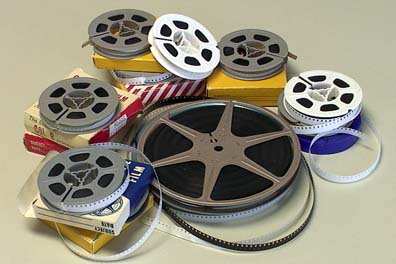 There are many different kinds of film and methods of recording sound to go with that film for novice and professional filmmakers alike. Some of these types of film are no longer mass-produced, but they can often be found at specialty shops.
There are many different kinds of film and methods of recording sound to go with that film for novice and professional filmmakers alike. Some of these types of film are no longer mass-produced, but they can often be found at specialty shops.
8 mm film: 8 mm film is a type of film format for motion pictures in which the film strip itself is 8 mm in width. There are two types of 8 mm film, the regular type that is sometimes called double 8 mm and Super 8. Super 8 is also 8 mm wide, but the perforations along the side of the filmstrip are smaller, resulting in a larger image area. 8 mm film was developed by Kodak in the 1930s and stopped production in the 1990s. However, it can still be bought today.
16 mm film: 16 mm is another type of film that is 16 mm in width and is commonly used in educational, industrial, or even low-budget films. This type of film was developed in the 1920s as a cheaper alternative for filmmakers as opposed to 35 mm, which was more common.
16 mm with sound: 16 mm film is able to include sound. In making it possible for sound to be added, only one side of the film has perforations that allow it to be pulled through the projector. The other side of the film can have a magnetic or optical sound track.
35 mm slides: 35 mm film is the most commonly seen film type for movies and photography. It is also one of the types of reversal film used in creating slides to be shown on a slide projector. A slide projector requires a positive image on a transparent base, as opposed to a negative like most film.
Open audio reel-to-reel magnetic tape: Reel-to-reel audio tape recording is sometimes called open-reel audio tape recording. This is a magnetic recording on an open reel, rather than encased in a cassette. This device consists of a supply reel and a takeup reel, and the tape transfers from reel-to-reel during the recording process. It’s one of the earliest types of tape recorders.
